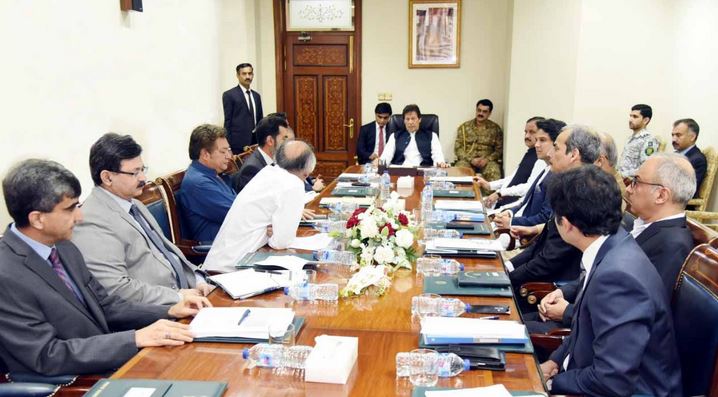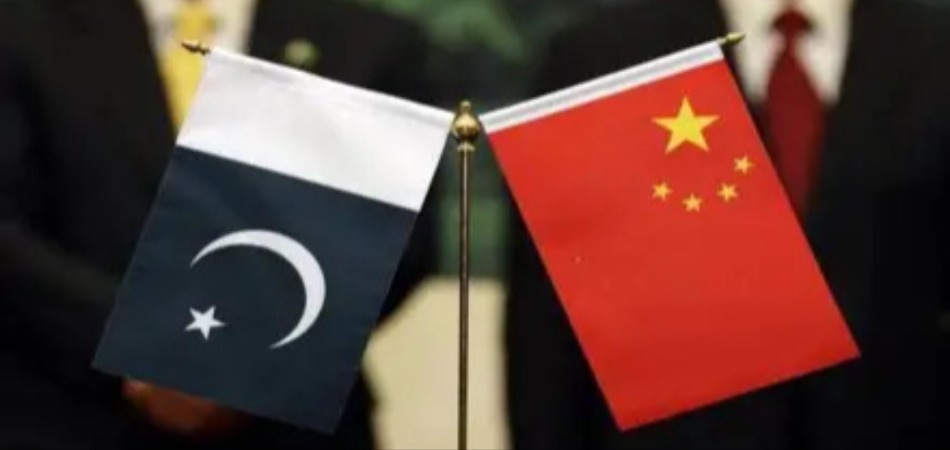Budget FY22: Can the renewed development frenzy bring sustainable growth?

MG News | June 12, 2021 at 01:11 PM GMT+05:00
June 12, 2021 (MLLN): Finance Minister Shaukat Tarin on Friday presented a federal budget worth Rs8.487 trillion for 2021-22 in the National Assembly, marking an increase of almost 19% from Rs7.13tr the year before.
Of this Rs8.487tr, the Federal Board of Revenue’s receipts are expected to contribute Rs5.829tr in FY22 - up 17% from Rs4.963tr - whereas non-tax revenues are projected to go up by more than 29% to Rs2.080tr.
After taking out the provincial share under the National Finance Commission, the net revenue for the federal government is targeted at Rs4.497tr, yielding an overall budget deficit of Rs3.42tr. Meanwhile, the total fiscal deficit as a percentage of GDP is expected to come down to 6.3%, from last year’s budgeted value of 7%. Among the non-tax revenue receipts of Rs2.079tr, the majority is projected to come from the petroleum levy at Rs610 billion and State Bank of Pakistan’s profit at Rs650bn.
On the expenditure side, Rs3.06tr are to go towards mark-up payments on domestic and foreign debts while the outlay for defense has been raised by 6.2% to Rs1.37tr for FY22. A marked jump can also be seen in the amount of subsidies, which have been jacked up by a whopping 226% to Rs682bn from just Rs209bn the year before. The bulk of these have been allotted for the power sector, from Rs139.5bn to a massive Rs596bn.
While the FY22 budget was largely being perceived as a neutral affair by the industry due to the tightrope the government is walking over with respect to growth and appeasing the International Monetary Fund, Mr. Tarin unveiled a number of measures to give relief to the corporate sector. This included the reduction of custom and additional customs duties on a host of industries, such as the import of hot-rolled coils, or raw materials for the food processing industry, among others.
The telecom and technology sectors saw a bit of mixed treatment as the flat fee of Rs250 on new sim card issuance was waived off but next taxes were proposed for calls exceeding minutes at Re1 and Rs5 per GB of data. With Pakistan already on the lower end of per-capita data consumption, how this move would affect the still nascent digital economy remains to be seen. Contradictory signals started coming in from the high ranks of the PTI administration within a few hours as Hammad Azhar tweeted how the said proposal hasn’t been approved, conveniently ignoring that it’s present in the document presented.
There was something to cheer for the capital markets as well as the capital gains tax was brought down to 12.5% from 15%, hinting at further reduction. Similarly, the turnover tax was lowered to 1.25% from 1.5%. A number of brokerages including Arif Habib Ltd deemed the budged to be a net positive for its business-friendly stance.
For the common man, the minimum wage was raised to Rs20,000 whereas the pension outlay for civil and military personnel increased to Rs480bn. The Budget Statement also mentions “pro-poor initiatives and social safety net through the Ehsaas programme”. This is accompanied with the target for Benazir Income Support raised to Rs246bn from Rs200bn. Similarly, another Rs30bn are targeted for Naya Pakistan Housing Authority’s subsidy, which is the same as the budgeted value for FY21 even though the revised amount was brought down to a mere Rs5bn.
Education has been allotted Rs91.97bn for FY22, up from the last budget’s target of Rs83.363 while the proposed health outlay is Rs28.352bn. While the government had budgeted for Rs25.494bn for FY21, the revised estimate was more than doubled to Rs52.32bn in light of the pressures arising from coronavirus. In fact, another $1.1 billion has been set aside for vaccines procurement as the National Command Operation Centre eyes vaccinating 70 million people. More broadly, there has been a substantial rise in the development expenditure, with the federal Public Sector Development Programme proposed at Rs900bn from Rs650bn. This increase in spending on big projects should go a long way in fuelling the growth target of 4.8% especially as cyclical industries like cement, steel, and autos come into full swing.
A day earlier, the finance ministry in its Economic Survey 2020-21 had called the new-found growth to be more sustainable than the previous bouts a few years ago, largely on account of stronger external account position as marked by the current account surplus. However, with the trade balance still negative and widening, there are some causes of concern as exports just haven’t caught up with imports. To at least try to amend that, the government’s reduction on CD and ACD on the inputs of a range of industries might help reduce some production costs - which are primarily import-dependent directly or indirectly - and trigger a meaningful growth in exports.
There are still some key causes of worry, particularly the Covid-19 situation which has the ability to squash all plannings out of the window. On the agricultural front too, things are far from ideal as two of the most important crops - cotton and wheat - have run into shortages lately. However, unlike the past two years, there is at least a clear intent to revive growth - something the population is starved for. And the formula for that is quite clear: spending. The government is quite cognizant of this reality, as clear from the increased development expenditure. How is this time going to be the previous boom bouts? Well, that’s anybody’s guess.
Copyright Mettis Link News
Related News
| Name | Price/Vol | %Chg/NChg |
|---|---|---|
| KSE100 | 138,597.36 256.32M | -0.05% -68.14 |
| ALLSHR | 85,286.16 608.38M | -0.48% -413.35 |
| KSE30 | 42,340.81 77.13M | -0.03% -12.33 |
| KMI30 | 193,554.51 76.19M | -0.83% -1627.52 |
| KMIALLSHR | 55,946.05 305.11M | -0.79% -443.10 |
| BKTi | 38,197.97 16.53M | -0.59% -225.01 |
| OGTi | 27,457.35 6.73M | -0.94% -260.91 |
| Symbol | Bid/Ask | High/Low |
|---|
| Name | Last | High/Low | Chg/%Chg |
|---|---|---|---|
| BITCOIN FUTURES | 117,670.00 | 121,165.00 117,035.00 | -1620.00 -1.36% |
| BRENT CRUDE | 69.23 | 70.77 69.14 | -0.29 -0.42% |
| RICHARDS BAY COAL MONTHLY | 96.50 | 0.00 0.00 | 2.20 2.33% |
| ROTTERDAM COAL MONTHLY | 104.50 | 104.50 104.50 | -0.30 -0.29% |
| USD RBD PALM OLEIN | 998.50 | 998.50 998.50 | 0.00 0.00% |
| CRUDE OIL - WTI | 66.03 | 67.54 65.93 | -0.20 -0.30% |
| SUGAR #11 WORLD | 16.79 | 17.02 16.71 | 0.05 0.30% |
Chart of the Day
Latest News
Top 5 things to watch in this week
Pakistan Stock Movers
| Name | Last | Chg/%Chg |
|---|
| Name | Last | Chg/%Chg |
|---|




 Weekly Forex Reserves
Weekly Forex Reserves